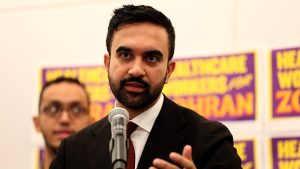The Declining Birth Rate Debate: Concerns, Challenges, and Silver Linings
The declining birth rate has emerged as a prominent global concern, with governments worldwide scrambling to implement policies to reverse the trend. From Donald Trump’s reported consideration of a $5,000 “baby bonus” to proposals tying transportation funding to birth and marriage rates, policymakers are increasingly anxious about fertility trends. While financial worries and cultural shifts are often cited as driving factors behind the decline, the debate about how to address it continues to evolve. But what exactly makes this issue so pressing for both conservative pronatalists and economists alike?
At the heart of the concern lies the potential economic impact of sustained low fertility rates. According to William Frey, a demographer and senior fellow at The Brookings Institution, “continued low fertility will lead to a very modest or even negative growth of the working age population.” The United States’ fertility rate is projected to average just 1.60 births per woman over the next three decades – significantly below the replacement rate of 2.1 needed to maintain population stability without immigration. This demographic shift creates a fundamental economic challenge: fewer workers supporting an expanding elderly population. As the baby boomer generation ages, this imbalance becomes particularly acute, potentially straining government programs like pensions and healthcare systems. The worker-to-retiree ratio, a critical metric for social security sustainability, faces increasing pressure when birth rates remain low for extended periods.
However, not all experts view the situation with equal alarm. Karen Benjamin Guzzo, director of the Carolina Population Center at the University of North Carolina, argues that “the dangers of low birth rates are overblown.” While acknowledging certain economic impacts, she contends that depopulation “is neither imminent nor devastating” and suggests that economic and immigration policies could effectively address these challenges. Beth Jarosz from the Population Reference Bureau takes a nuanced view, stating that the real problem isn’t an aging population itself but “failing to plan for an aging population.” She warns that as populations age, societies may prioritize senior-supporting programs over investments in children – precisely when those fewer children need additional support to become productive members of society. The concern extends beyond economic metrics to questions about society’s values and priorities during demographic transitions.
Planning ahead appears to be the key to navigating these demographic changes successfully. Contrary to Elon Musk’s dramatic claim that “low birth rates will end civilization,” many demographers believe societies can adapt through thoughtful policy approaches. Jarosz suggests that automated jobs, adjusted pension systems, and healthcare innovations could create sustainable models for societies with fewer births. Interestingly, many policies that would help societies adapt to aging populations – such as walkable communities, family-friendly workplace policies, and affordable healthcare – are the same ones that might incidentally make it easier for people to have children. A 2024 paper in the Annual Review of Economics recommends increased investment in education and health for the next generation, alongside productivity-enhancing infrastructure and research, while encouraging older workers to remain in the workforce longer through improved health initiatives and modified retirement policies.
While the challenges of declining birth rates deserve serious attention, some experts highlight positive aspects of this trend. The decline has occurred primarily among women in their teens and early twenties, with American teen births dropping dramatically from nearly 600,000 in 1975 to around 136,000 in 2024. As Karen Benjamin Guzzo notes, these are often unintended pregnancies, and the decline reflects improved contraceptive use and family planning. Margaret Anne McConnell, a Global Health Economics Professor, views these changes as evidence of progress: “Any time we see people being able to make fertility choices that suit their family, I think that’s a success.” The ability to delay childbearing allows people – especially women – to pursue education, establish careers, and find suitable partners before having children. This perspective reframes the conversation from a crisis narrative to one that recognizes expanded reproductive autonomy and life choices.
The path forward likely requires balanced policy approaches that both support those who want children and prepare for a society with a different demographic structure. Most experts advocate for policies that make parenting more feasible through affordable childcare, paid family leave, flexible work arrangements, and economic stability. As McConnell suggests, addressing barriers to parenthood “would solve the problem for whom it is a problem” by helping people achieve their desired family size rather than attempting to convince everyone to have more children. Beth Jarosz emphasizes that successful aging societies will need thoughtful planning around healthcare access, family-friendly workplace policies, accessible housing, and flexible transportation systems. The question isn’t whether societies can adapt to changing demographics – they certainly can – but whether leaders will implement necessary changes proactively. Rather than seeing declining birth rates as an existential threat, we might view them as an opportunity to reimagine social structures that better serve both the young and the old during this demographic transition.















